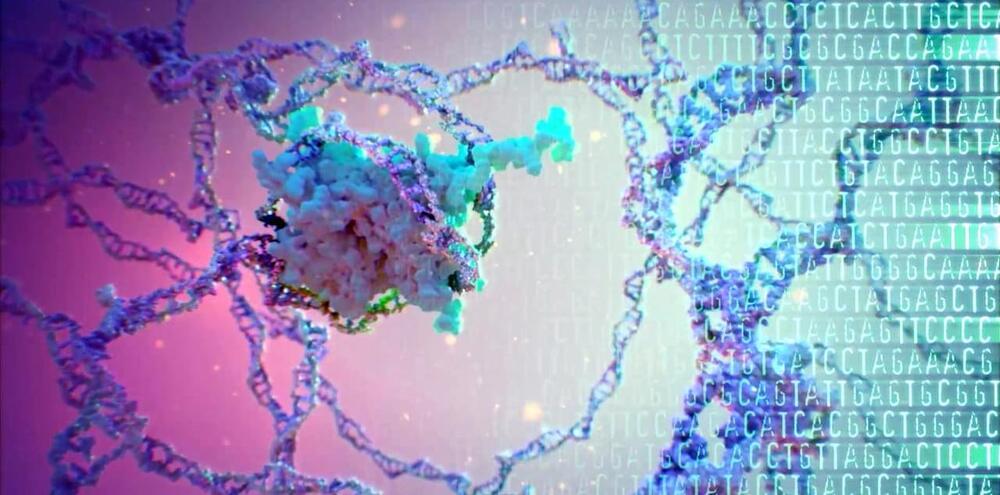Blobs left behind from a collision between the Earth and a Mars-sized object may have led to plate tectonics and eventually earthquakes.







The brain is one of the most complex entities in biology. For thousands of years, humans have wondered how the human brain works, but only in the past few years has technology evolved so that scientists can actually answer some of the many questions we have. What are the causes of brain disorders? How do our brains develop? How does the brain heal after a head injury? While we still have a long way to go before we can understand the many facets of the human brain, one technology – CRISPR – has allowed us to start answering these questions on a genetic level.
What is CRISPR?

Imagine having telepathic conversations with loved ones, instantaneously accessing superhuman computational power, playing back memories and dreams, or immersing yourself and every sense you possess into a virtual entertainment experience. In the distant future, if brain-computer interfaces (BCIs) are successful at reading and writing information to the brain, and if humans adapt to the technology, we could experience some pretty amazing scenarios. But, there are many outstanding questions for how we could ensure a bright future: Who will own the data generated by our brains? Will brain data be bought and sold by data brokers like other personal information today? Will people be forced to use certain BCIs that surveil their brain activity (for example, to make sure you’re paying attention at work and school)? Will BCIs put peoples’ brains at risk of being hacked? As with all new technology, more of these philosophical questions will need to be investigated and answered before there is widespread adoption and use of BCIs in the future.
Page-utils class= article-utils—vertical hide-for-print data-js-target= page-utils data-id= tag: blogs.harvardbusiness.org, 2007/03/31:999.274997 data-title= Are You Ready for Tech That Connects to Your Brain? data-url=/2020/09/are-you-ready-for-tech-that-connects-to-your-brain data-topic= Technology and analytics data-authors= Lauren Golembiewski data-content-type= Digital Article data-content-image=/resources/images/article_assets/2020/09/Sep20_28_3191098-383x215.jpg data-summary=
Who owns that data?

What if someone handed you a tool and said that you could better the lives of people before their birth by changing their genes? Would you do it?
CRISPR-Cas9 is one such tool. It’s an efficient and effective gene-editing technology that works by tagging a section of DNA with an RNA segment, and then using a protein called Cas9 to cut the DNA at the specified point. Then, the cell’s own DNA machinery works to add or delete DNA.
This technology opens up the pathway to a variety of gene-editing applications, from eliminating HIV in living organisms to creating a potential cure for Huntington’s disease. There is especially high potential for single-gene disorders to be eradicated. For example, promising results from the successful removal of a gene known to cause fatal heart disease from the embryo will not only save lives but also prevent the passing down of the gene.

Down syndrome (DS) is one of the most prevalent genetic disorders in humans. The use of new approaches in genetic engineering and nanotechnology methods in combination with natural cellular phenomenon can modify the disease in affected people. We consider two CRISPR/Cas9 systems to cut a specific region from short arm of the chromosome 21 (Chr21) and replace it with a novel designed DNA construct, containing the essential genes in chromatin remodeling for inactivating of an extra Chr21. This requires mimicking of the natural cellular pattern for inactivation of the extra X chromosome in females. By means of controlled dosage of an appropriate Nano-carrier (a surface engineered Poly D, L-lactide-co-glycolide (PLGA) for integrating the relevant construct in Trisomy21 brain cell culture media and then in DS mouse model, we would be able to evaluate the modification and the reduction of the active extra Chr21 and in turn reduce substantial adverse effects of the disease, like intellectual disabilities. The hypothesis and study seek new insights in Down syndrome modification.
Keywords: Down syndrome, CRISPR/Cas9, Designed DNA construct, Poly D L-lactide-co-glycolide (PLGA), Nano-carrier, Chromosome 21 inactivation.
Looking to embed analytics in your products but daunted by the complexity and resource demands?Join us to discover how you can rapidly (in days/weeks) deliver value with modern analytics, boosting innovation and increasing revenue through data-driven solutions. Data Experts at Aimpoint Digital and Sigma will explain what modern embedded analytics means and how it:- Empowers developers to swiftly create visualizations and data apps on a composable platform.- Wins customers with extensive data exploration, database writeback, and robust security for multi-tenancy. Register today to leverage data for growth and operational excellence. Act now before losing your competitive edge.